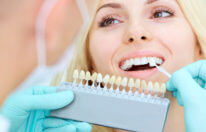- Home
- About Us
- Adult Dentistry
adult dentistry
We have been improving our patients’ smiles for years with general, cosmetic and reconstructive dentistry.
- Pediatric Dentistry
- Baby Bottle Tooth Decay
- Care for Your Child’s Teeth
- Dental Radiographs (X-Rays)
- Early Orthodontic Treatment
- Eruption of Your Child’s Teeth
- First Visit
- Fluoride
- Mouth Guards
- Pediatric Dental Appliances
- Pediatric Dental Emergencies
- Sedation Dentistry
- Xylitol – Reducing Cavities
MenuMenu - Patient Resources
- Contact Us












